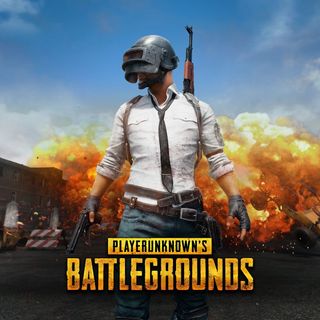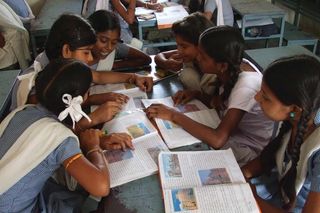
Interactive Teaching Methods Work, but Come at Mental Health Cost for Students
Cold calling and group work drive home lessons, but increase anxiety.

Active learning methods, which integrate students into the learning environment and encourage a more hands-on approach to teaching compared to, say, a lecture, are gaining a foothold in Indian schools. While these teaching tools, which include cold calling (picking on a random student to answer a question) and group work, have been known to increase student engagement and ability to apply information, they also can trigger anxiety and a fear of negative evaluation in students, which studies have found can deter education goals.
In addition to cold calling and group work, other active learning methods used to incite students’ critical thinking skills include “Think-Pair-Share” activities, where the professor asks an open-ended question that students take time to think about, then proceed to discuss in pairs, and finally share with the entire class; “Peer Instruction,” which entails forming arguments to conceptual questions and convincing your classmates (in small groups) of your take; and applying case studies read in class to real world situations to look for solutions, according to Duke Learning Innovation.
Several studies have found students associate anxiety with many active learning methods used in science classes. Students found the combination of difficult science curricula, highly competitive environment, and large class sizes a source of anxiety, according to “The Influence of Active Learning Practices on Student Anxiety in Large-Enrollment College Science Classrooms,” which made inferences after gathering 52 student interviews. In addition, frequent implementation of active learning methods created more situations for students to be evaluated in public, which also caused anxiety, the study concluded.
For example, active learning methods don’t incorporate the social and learning abilities of introverts, who might need time by themselves to figure out solutions to problems posed in class, before launching into a discussion with their peers in public, argues American lecturer Susan Cain in Quiet: The Power of Introverts in a World That Can’t Stop Talking.
“Students can experience achievement anxiety when they evaluate their own learning, such as when a student is working on an in-class assignment and realizes that he or she is unable to solve a problem,” according to the study. “Anxiety has been described as a multifaceted reaction to the threat of failure; the idea of failure can be especially devastating when students put effort into a task because it can imply that they have a low ability or are incompetent, which threatens their self-worth.”
Students with high levels of anxiety also function better in teacher-centered classrooms, akin to a traditional lecture environment, where student participation isn’t required, according to a study that documented the experiences of 69 junior college students enrolled in an introductory psychology course titled “Teacher-Centered Versus Student-Centered Mode of College Classroom Instruction as Related to Manifest Anxiety.” Students with low levels of anxiety, however, performed best in student-centered classrooms that encouraged constant dialogue between students, the study found.
Related on The Swaddle:
International Boards Aren’t Easier; They’re Just Better at Involving Kids in Their Learning
However, active learning methods can affect other students’ mental health positively. Integrated learning environments help students learn the course material better, which reassures them of their grasp of the curricula. This, in turn, quells anxiety in some cases. Researchers have also suggested that a moderate level of anxiety is good for students, especially in active learning environments, as they will be kept on their toes and feel greater pressure to familiarize themselves with the curriculum.
Integrated and interactive forms of learning have been known to help students go “beyond listening, taking notes and executing prescribed procedures,” enabling them to work collaboratively and “figure things out for themselves,” according to the Better World campaign undertaken by the Massachusetts Institute of Technology.
In India, especially, education “largely involves sermonising on idealistic lines,” with a focus on learning that is more theoretical than investigative, according to a special issue of the KIIT Journal of Research & Education titled “Teacher Education-Today & Tomorrow.” The same issue cites studies that found student concentration wavers after sitting through 10 to 15 minutes of a lecture, making learning more of a “spectator sport,” writes Garima Singh, professor in the department of adult, continuing education and extension at the University of Delhi in the chapter titled “Need and Strategy of Active Learning in India.”
Related on The Swaddle:
How Learning Differs Across India’s Education Boards
That’s what makes active learning pedagogy so attractive. At the same time, the need to ensure teaching methods are effective has never been greater, as studies suggest that students are increasingly stressed and anxiety-ridden worldwide. “In the city of Mumbai, approximately 11 percent of regular school students studying in class standards III to X had symptoms of overall anxiety,” according to “Anxiety Symptoms in Regular School Students in Mumbai City, India,” a study of 493 students aged 8 to 15 years. School students were also found to have symptoms of six different types of anxiety — separation anxiety, social anxiety, obsessions/compulsions, panic/agoraphobia, fears of physical injury and generalized anxiety — with older students and girls more susceptible.
One solution is to prepare students before they come to class, as proposed by Trisha Sippel, a postdoctoral fellow and science teacher at the University of Washington’s Fred Hutchinson Cancer Research Center. Some of the exercises she proposes to deploy active learning methods effectively include giving students time to “think or write before sharing with their group or the class;” using “homework to prepare the students for topics that will be discussed in class” and “online discussions before class to allow students to flesh out ideas;” implementing the jigsaw method, “which allows each student to become an expert on a certain topic before teaching it to the other students in their group; letting students know that it is okay to answer incorrectly; encouraging differences in opinion; building a sense of community amongst students; and reinforcing answers by writing them on the board.
Ultimately, active learning is one of many tools for teaching, at its most powerful when methods are reconciled with awareness and accommodation of their potential effect on students’ mental health.
Rajvi Desai is The Swaddle's Culture Editor. After graduating from NYU as a Journalism and Politics major, she covered breaking news and politics in New York City, and dabbled in design and entertainment journalism. Back in the homeland, she's interested in tackling beauty, sports, politics and human rights in her gender-focused writing, while also co-managing The Swaddle Team's podcast, Respectfully Disagree.
Related


Untrending: If You’re Already Healthy, You Don’t Need Kombucha or Kefir
